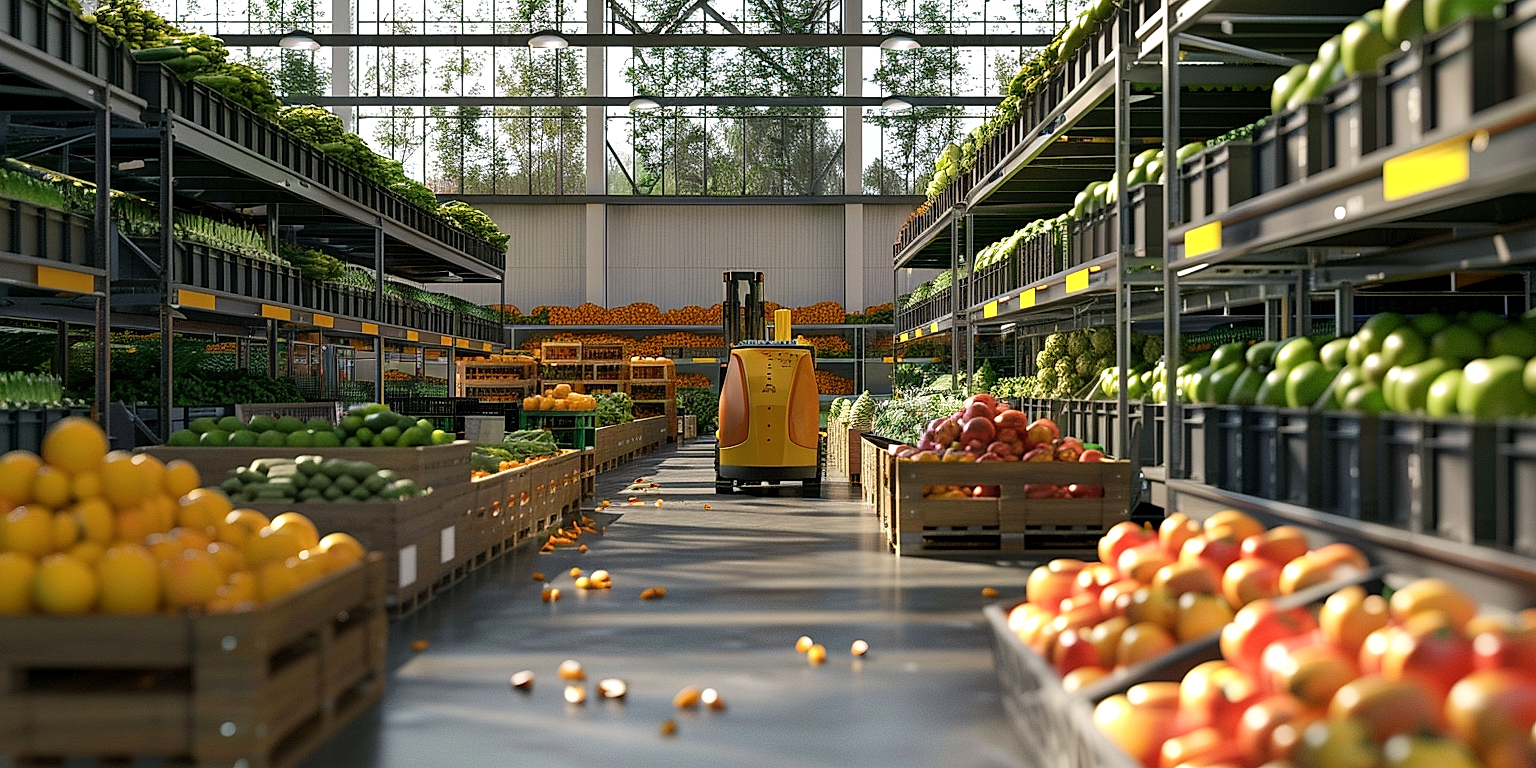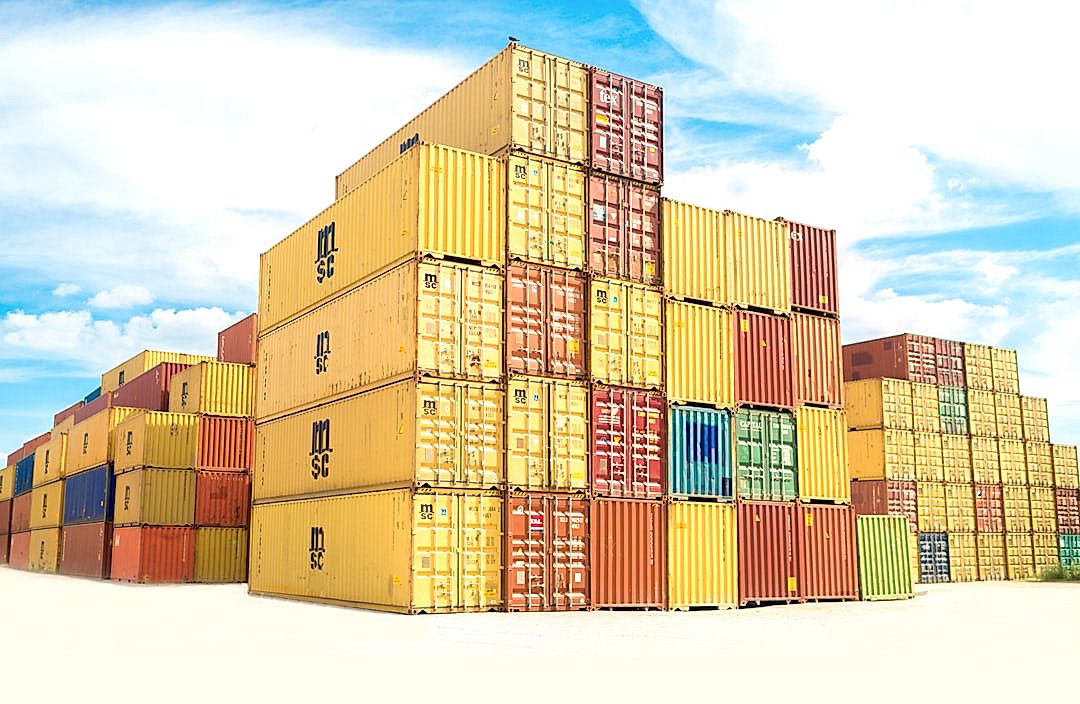The realm of logistics in produce distribution is a complex blend of operational functionality, traceability, and quality control.
Amid the expanding global supply chains, efficiency in transportation and product freshness have taken center stage.
The nature of the produce itself, which is perishable, amplifies the existing business nuances.
Copious challenges exist, putting immense strain on existing systems, especially in efficiently navigating delivery networks.
This article aims to delve into these difficulties in a lucid manner, underlining potential remedies tailored to meet these industry-specific hurdles.
Knowledge of these predicaments and potential solutions are crucial to enhancing the robustness of the industry and its supporting logistics.
Contents
- Challenges & Solutions In Produce Distribution Logistics
- 1. Challenge: Product Damage During Transportation
- 1. Challenge: Product damage during transportation
- 3. Challenge: Managing seasonal variations – Solution: Accurate forecasting and planning.
- 4. Challenge: Short product lifespan
- 2. Challenge: Short product lifespan. Solution: Rapid, efficient delivery processes{{DOT}}
- 6. Challenge: Inventory mismanagement Solution: Implement advanced inventory management systems
- 7. Challenge: Managing Seasonal Variations
- 8. Challenge: Unpredictable Demand – Solution: Utilize Predictive Analysis Tools
- 9. Challenge: Inconsistent product quality
- 10. Challenge: High logistic costs
- The Bottom Line
Challenges & Solutions In Produce Distribution Logistics
1. Challenge: Product Damage During Transportation
The issue of product damage during transportation is a significant challenge that affects a number of businesses dealing in produce distribution and logistics.
It is not just a matter of losing the products, but also the financial consequences that stem from such losses.
This could include costs incurred from product replacements, delays in delivery, unsatisfied customers, and potential damage to the company’s reputation.
Produce, in particular, is highly perishable and requires extreme care during transportation to ensure the quality is maintained from the farm to the consumer.
A number of factors can cause such damage including improper handling, inadequate packaging, exposure to adverse weather conditions, and bad transport practices.
While some of these factors are unpredictable, there are certain preventative measures that can be put in place to minimize the chances of product damage during transportation.
The first and probably the most straightforward solution is to employ the use of robust packaging.
Products must be packed in tough, durable packaging materials that are capable of withstanding the rigors of the transport process.
It’s important to note that the packaging must be suitable for the type of product being moved.
For example, fruits and vegetables may require Specialized packaging that allows for ventilation to prevent condensation and subsequent decay.
Fragile products like eggs, on the other hand, require packaging that provides ample cushioning to protect against physical impact.
Another solution to product damage during transportation is the proper handling of products during loading and offloading.
In situations where this is not achievable, the use of modern technology such as robotics and automated systems can prove beneficial.
Driver training is also essential as responsible driving habits can significantly reduce instances of product damage.
Furthermore, it’s important to consider the mode of transportation.
While road transportation is common, sometimes using rail or air transport can offer better conditions for certain types of produce.
Proper planning and scheduling of transport routes can minimize unnecessary stops and starts, reducing the risk of damage.
All these strategies combined can go a long way in mitigating the challenge of product damage during transportation in the produce distribution logistics sector.
1. Challenge: Product damage during transportation
The produce transportation industry often faces the significant challenge of product damage during transport.
Essentially, this can occur due to various factors such as mishandling, improper packaging, and subpar storage conditions while in transit.
Excessive vibration and impact during transportation can lead to bruising or other damage to delicate produce items.
Moreover, poor packaging can expose the produce to damaging elements, such as excess moisture, that encourage spoilage and degrade quality.
Yet, one cannot ignore that the importance of robust packaging extends beyond just physical protection.
Great packaging also acts as an insulator against rapid temperature changes that could harm the produce.
Even more, it can provide a barrier against contamination by pathogens, insects, dust, and other safety risks.
Arguably, robust packaging is not just about maintaining the physical integrity of the produce during transportation, but also about preserving its safety and quality until it reaches the consumer.
Therefore, it is paramount for logistics managers to invest in high-quality packaging materials and techniques.
For instance, the use of corrugated fiberboard boxes or reusable plastic crates can provide adequate cushioning and ventilation for the produce.
Moreover, exploring innovative packaging solutions such as modified atmosphere packaging (MAP) can considerably extend the shelf-life of the produce.
Needless to say, the specific choice of packaging material should be tailored to the nature of the produce – whether it’s robust like potatoes, or fragile like leafy greens.
Beyond that, it’s also crucial to train handling staff about the proper loading and unloading techniques, to prevent any damage due to mishandling.
Simultaneously, it’s recommended to regularly review and update packaging strategies in line with the latest industry standards and best practices.
To sum it up, approaching the challenge of product damage during transportation strategically, and making the right investments in robust packaging, can go a long way in maintaining the quality of produce and enhancing the overall efficiency of distribution logistics.
3. Challenge: Managing seasonal variations – Solution: Accurate forecasting and planning.
One of the significant logistical challenges many businesses endure is managing the seasonal variations inherent in the world of produce distribution.
To overcome, it is necessary to implement accurate forecasting and meticulous planning strategies.
Logistical operations in the produce sector are often subject to drastic changes due to the nature and characteristics of different produce needing transportation.
Considering the freshness and shelf-life of various goods, handling times and delivery schedules may vary from season to season.
Seasons affect not just the type of produce available, but the quantity required as well, adding another dimension to an already complex distribution logistics system.
The implications of not adequately managing these seasonal changes can range from a deterioration of product quality, misplaced shipments, all the way to a complete stall in operations.
Accurate forecasting is a key element in addressing this challenge.
Forecasting aids in anticipating changes in demand related to seasonal variations, thereby ensuring proper inventory management.
Furthermore, forecasting helps in determining the right type and quantity of produce that needs to be shipped, reducing wastage and optimizing resources.
Coupled with proper planning, forecasting can streamline operations, ensuring on-time deliveries and maintaining freshness.
Advanced data analytics can play a tremendous role in forecasting.
With these tools, businesses can derive patterns from past data, which can further be used to predict future trends and seasonal variations.
Proper planning is another critical aspect of overcoming challenges posed by seasonal variations.
Transportation schedules, staffing, warehouse capacity, all need to be planned meticulously considering the forecasted demand.
Meticulous planning based on accurate forecasting can save businesses from overstocking or understocking, thus maintaining balance and driving profits.
Therefore, managing seasonal variations through accurate forecasting and planning is not only necessary for optimal operations but also for maintaining high-quality supply service.
4. Challenge: Short product lifespan
The challenge of a short product lifespan is a critical factor to consider in produce distribution logistics.
Often, agricultural products and perishables have a limited window for consumption, making their respective logistics a unique set of operations in the wider spectrum of supply chain management.
In such context, efficient delivery processes have become an optimal solution to this challenge.
By decreasing the timeframe from harvesting or production to the end consumer, you can significantly increase the product’s shelf life and overall quality.
It’s important to integrate logistics strategies that emphasize speed and efficiency into your supply chain management.
These can include utilizing expedited shipping options, improving route planning for reduced travel time, or even leveraging cutting-edge technologies like drone deliveries or autonomous vehicles.
However, achieving these rapid delivery methods requires a multifaceted approach that considers a range of factors.
From sourcing and procurement to transportation and delivery, each stage in the supply chain impacts the efficiency of the overall process.
An advanced logistics system that is explicitly geared towards rapid, efficient delivery processes is essential.
This system should involve all sectors, including production, quality control, procurement, transportation, retail, and customer service, and stringently regulated and consistently optimized for the highest efficiency.
Moreover, there’s also a crucial need to adapt rapidly to changes in the market and conditions.
Unexpected demand or supply fluxes, unexpected weather circumstances, traffic disruptions, or equipment malfunctions can drastically affect the product lifespan.
In these instances, a rapid and flexible response is necessary, and being prepared with contingency plans is key.
Being able to swiftly switch to alternative delivery methods can make the difference between the product reaching the consumers in optimal condition or not.
Produce distribution logistics with a shorter product lifespan also necessitates a strong commitment to reducing waste wherever possible.
Given the expedited nature of these items, losses can quickly accumulate if not properly managed.
Lastly, maintaining a comprehensive, real-time view on inventory can prevent products from exceeding their lifespan and consequently becoming wastage.
Doing so can help to closely monitor stock and ensure the shortest paths to consumers are consistently utilized.
2. Challenge: Short product lifespan. Solution: Rapid, efficient delivery processes{{DOT}}
The short lifespan of products, specifically perishable goods, poses a significant challenge in the produce distribution logistics.
This is primarily because these goods need to get into the customer’s hands before they start to deteriorate.
To improve the lifespan of such products, there must be a system of rapid, efficient delivery processes in place.
Effective delivery processes must be planned and executed to ensure that products are not left sitting in storage for long, which can easily lead to spoilage.
One way to ensure rapid delivery is by optimizing the delivery routes.
This involves using route optimization software that can calculate the most efficient route in real-time, factoring in things like traffic and weather conditions.
Another way is to have an efficient loading and unloading process at the warehousing end to minimize the time spent in these operations.
This can be achieved by employing skilled workers and using the right equipment for the job, thereby reducing the risk of unnecessary delays.
Efficient delivery processes also involve timely communication with the customer about their delivery status.
This helps them plan better and reduces the risk of failed deliveries, which can lead to wasted products.
Efficient delivery should also take into consideration the last mile delivery, which is often the most challenging and expensive part of the delivery process.
Providing options for flexible delivery slots and investing in local distribution centers can help make last mile deliveries quicker and more efficient.
End-to-end visibility of the delivery process is also cardinal.
By leveraging advanced tracking technologies and real-time data, businesses can ensure products spend the least amount of time in transit and reach the customer in the best possible condition.
Finally, adopting a customer-centric approach to delivery, where their convenience and preferences are prioritized, can also contribute to a more efficient delivery process.
While addressing the challenge of short product lifespan in produce distribution logistics can be quite complex, implementing rapid and efficient delivery processes can make a noticeable difference in reducing product waste and ensuring customer satisfaction.
6. Challenge: Inventory mismanagement Solution: Implement advanced inventory management systems
The issue of inventory mismanagement presents a significant hurdle in the smooth operation of produce distribution logistics.
Typically, this problem originates from not having a data-driven, real-time perspective of inventory levels, which invariably leads to overstocking, understocking or out-of-date stock.
A mismanaged inventory leads to refrain from stocking certain products due to the fear of not selling, which can result in lost sales opportunities and potential profit.
Operation managers must learn to balance between having enough stock to meet customer demands and avoiding overstocking that can cause wastage and tie up resources.
To find this balance, it is essential to implement advanced inventory management systems into the logistical operations of the company.
An advanced inventory management system can provide a robust solution to this problem, offering direct visibility and tracking of all stock levels in real-time.
Effective inventory management systems can reduce overstocking and understocking situations, ensuring that there is always sufficient stock to cater to customer needs without having excess that results in wastage.
On another level, these systems can also help in reducing operational costs, by identifying slow-moving items and enabling managers to take appropriate action early.
Through tracking functionalities, these systems can offer clear insights into consumer buying behaviors and trends, while highlighting potential problems before they become significant issues.
This allows for efficient inventory control, improved demand forecasting, and more informed decision-making.
Moreover, advanced inventory management systems can integrate effortlessly with other supply chain systems and ERP software, establishing a seamless flow of information.
This complete visibility allows you to anticipate demand, receive alerts on possible stockouts, and make swift, knowledge-based decisions to optimize inventory levels.
Despite these obvious benefits, implementation is often met with resistance due to upfront costs and the need to change existing processes and workflows.
However, when compared with the potential financial losses caused by mismanaged inventory, the cost of implementing an advanced inventory management system can, in fact, be seen as an investment in the company’s future profitability and resilience.
Ultimately, proper inventory management is crucial in ensuring consistent supply of produce to consumers and maintaining the overall viability of the produce distribution logistics.
The ability to utilize advanced management systems ensures that the potential issues caused by mismanaged inventory are comprehensively mitigated.
7. Challenge: Managing Seasonal Variations
In the world of produce distribution logistics, managing seasonal variations is a significant challenge that businesses face.
Seasonality has a major impact on the availability of various produce and hence, the supply chain logistics related to it.
Most fruits and vegetables have specific growing seasons and their availability peaks during certain times of the year.
This results in a high demand for these goods during their peak season but could potentially leave suppliers with excess inventory during off-season periods.
Additionally, seasonality can also lead to price fluctuations, with prices increasing during off-peak seasons due to scarcity and reducing during peak seasons due to excess supply.
It is essential for businesses to predict these fluctuations accurately and plan their logistics accordingly to ensure business continuity and reduce losses.
In order to manage these seasonal variations effectively, businesses need to engage in accurate forecasting and planning.
Forecasting involves predicting the projected demand for a certain produce item during its peak and off-peak seasons.
This can be done by carefully analyzing past sales data, market trends, consumer buying patterns, and other influencing factors.
Planing, on the other hand, involves making necessary adjustments in the logistics system to cater to the predicted demand.
For instance, if an increase in demand for a certain produce item is expected during its peak season, the business may need to invest in additional transport and storage facilities to manage the excess supply efficiently.
Similarly, during off-peak seasons, businesses might need to negotiate with suppliers for lower order quantities to avoid piling up excess inventory.
Besides, businesses can also consider diversifying their product range and venturing into new markets where the off-season produce might still be in demand.
This can not only act as a buffer against seasonal fluctuations, but also open up new revenue channels for the business.
Overall, managing seasonal variations in produce distribution logistics is a complex task that requires careful planning and strategic decision-making. However, with proper forecasting and planning protocols in place, businesses can turn this challenge into an opportunity to optimize their logistics processes and maximize profits.Remember that despite the operational challenges brought about by seasonal variations, these fluctuations also present unique opportunities for businesses to grow and expand.
8. Challenge: Unpredictable Demand – Solution: Utilize Predictive Analysis Tools
One of the significant challenges in produce distribution logistics is unpredictable demand.
Demand for products can vary due to numerous factors, including seasonal changes, market trends, and consumer preferences.
A sudden surge or drop in demand can disrupt supply chains and lead to excessive inventory or shortages.
The traditional way to manage demand was to rely on historical data and intuition.
However, with the increasing complexity of supply chains and market volatility, these methods are often inadequate.
Using predictive analysis tools allows businesses to accurately forecast demand and adjust their processes accordingly, significantly reducing the detrimental effects of unpredictable demand.
These tools use machine learning algorithms to analyze a wide array of data, such as sales history, market trends, and consumer behavior.
They provide actionable insights that help in making strategic decisions regarding production, inventory management, and logistics.
By accurately predicting demand, companies can keep the right amount of stock, optimize their warehousing spaces and avoid overproduction or underproduction.
This not only boosts operational efficiency, but it also reduces costs and waste, which is particularly crucial in the produce sector where products have a short shelf life.
Moreover, the ability to accurately forecast demand can help businesses to excel in customer service by ensuring product availability and timely delivery.
Having the right products available at the right time can improve the customer’s shopping experience and lead to higher customer satisfaction and loyalty.
In the competitive market of produce distribution, using predictive analysis tools for demand forecasting can provide a significant competitive edge.
It is, however, essential to remember that these tools should be seen as aids to improve decision-making, and businesses must not solely rely on them.
It’s crucial for businesses to keep their strategies flexible and be able to adapt quickly to any potential changes in demand patterns.
The integration of predictive analysis tools requires a change in the culture of the organization and educating staff members to make the best use of the available data and insights.
9. Challenge: Inconsistent product quality
Distribution logistics, particularly within produce sectors, is often subjected to the exigency of maintaining consistent product quality. Notably, the inconsistent quality of a product can significantly disrupt the distribution process, inflicting detrimental effects on the overall business reputation and customer satisfaction.
The variable quality of agricultural products is a recurring challenge in the produce distribution logistics. Sustainable solution should be aimed for this contradicting issue.
To overcome this challenge, strict supplier quality checks is highly recommended. Stringent quality checks at every stage of the distribution process can effectively ensure the consistency of product quality.
“Implementing rigorous supplier quality checks can facilitate the detection and elimination of any discrepancies in product quality.”
Enforcing strict quality control measures right from the supplier ensures that only products of superior quality enter the distribution chain. This not only maintains the consistency of product quality but also significantly reduces the chances of returns caused by poor quality.
Apart from strict supplier quality checks, it’s also crucial to engage in constant quality assessment programs. Regular assessment of product quality can assist in identifying any quality inconsistencies early enough and enable immediate corrective measures to resolve the issues.
Additionally, businesses in the produce distribution logistics should consider maintaining a close relationship with suppliers. This can enable businesses to directly specify their quality expectations to the suppliers and ensure that these requirements are strictly adhered to.
By conducting strict supplier quality checks, businesses can not only prevent substandard products from entering their distribution chain but also hold suppliers accountable for their products. This can significantly enhance supplier responsibility and eventually result in the consistent supply of high-quality produce.
Businesses should also invest in advanced quality control technology. Such systems often provide more accurate results compared to manual checks, hence, greatly enhancing the consistency of product quality.
These could include automated sorting machines, optical quality scanners, and other cutting-edge technology that could detect size, color, and other physical defects within the produce.
Moreover, constant staff training is also a necessary measure to ensure the consistency of product quality. Training can equip the workforce with the latest quality check tactics, enabling them to effectively detect any quality inconsistencies.
In addition, businesses should also consider adopting suitable storage and transportation practices to maintain product quality. This includes proper temperature control and handling methods to reduce spoilage or damage.
Finally, customer feedback can also be an essential tool in maintaining consistent product quality. Regularly obtaining customer feedback on the quality of produce can help businesses allocate resources more accurately towards improving the areas that need it most.
In essence, maintaining consistent product quality in produce distribution logistics may pose a substantial challenge. However, implementing strict supplier quality checks, adopting suitable storage and transportation practices, investing in advanced quality control technology, and obtaining regular customer feedback, can offer a viable solution to this challenge.
10. Challenge: High logistic costs
The costs associated with logistics represent a significant portion of the expenses in any produce distribution operation.
As such, minimizing these costs poses a pressing challenge for businesses in this industry.
The high costs have been attributed to various elements such as transport-related expenses, labor costs, warehousing costs among others.
Transport-related expenses, particularly in long-haul transportation, are arguably the largest contributor to high logistic costs.
Fuel prices, maintenance, and repairs, as well as toll and highway fees, all add up to form a substantial cost pillar.
Logistics also encompasses the cost of labor, which goes beyond employing drivers for transportation.
There is a hierarchy of management involved in the coordination and execution of logistical processes, which all add up to the expenditure.
Apart from transport and labor, the cost of warehousing is another major contributor.
Storage facilities, not only encompass the initial investment in infrastructure but also continuous expenses related to utilities, maintenance, and repair work.
The grouping of these factors indicates the complexity in managing logistic costs, and a simplistic approach to reducing these costs might not be the most effective strategy.
An optimal solution could involve a comprehensive review of the entire logistical operations, with the goal of identifying areas of inefficiency and waste.
A key factor in reducing transport-related costs would be to optimize transport routes and schedules.
Employing logistics software programs can aid in identifying the most efficient routes and schedules, ultimately leading to significant reductions in fuel costs and wear and tear on vehicles.
Improving labor efficiency is the another viable approach to cut costs.
By investing in training programs and equipment, the productivity of the workforce can be significantly enhanced, leading to lower labor costs over the long run.
To tackle the high warehousing costs, the investment in modern, multi-purpose, and temperature-controlled warehouses could bring down the expenses related to utilities, maintenance, and obsolescence.
Ultimately, managing high logistic costs is about maintaining a delicate balance, where costs are minimized without sacrificing the quality of service.
Companies need to identify where they can cut back without detrimentally affecting the overall efficiency and effectiveness of their logistics chain.
The Bottom Line
Navigating the complex landscape of supply chain and logistics management, it is essential to address a myriad of challenges that might adversely impact product quality and customer satisfaction.
Ensuring robust packaging can significantly help in minimizing product damage during transportation, while efficient delivery processes can extend product lifespan.
By accurately forecasting and planning for seasonal variations, and optimizing transport routes and schedules, companies can manage high logistics costs effectively.
Investment in temperature-controlled warehouses can solve the problem of inadequate storage facilities and advanced inventory management systems can prevent inventory mismanagement.
Understanding laws and regulations can ease regulatory compliance hurdles.
Embracing predictive analysis tools can tackle unpredictable demand and strict supplier quality checks can ameliorate inconsistencies in product quality.
Lastly, the use of advanced tracking technologies can streamline the complex traceability demands.
With these strategic measures in place, businesses can navigate their way through the logistics labyrinth with added ease and efficiency.




